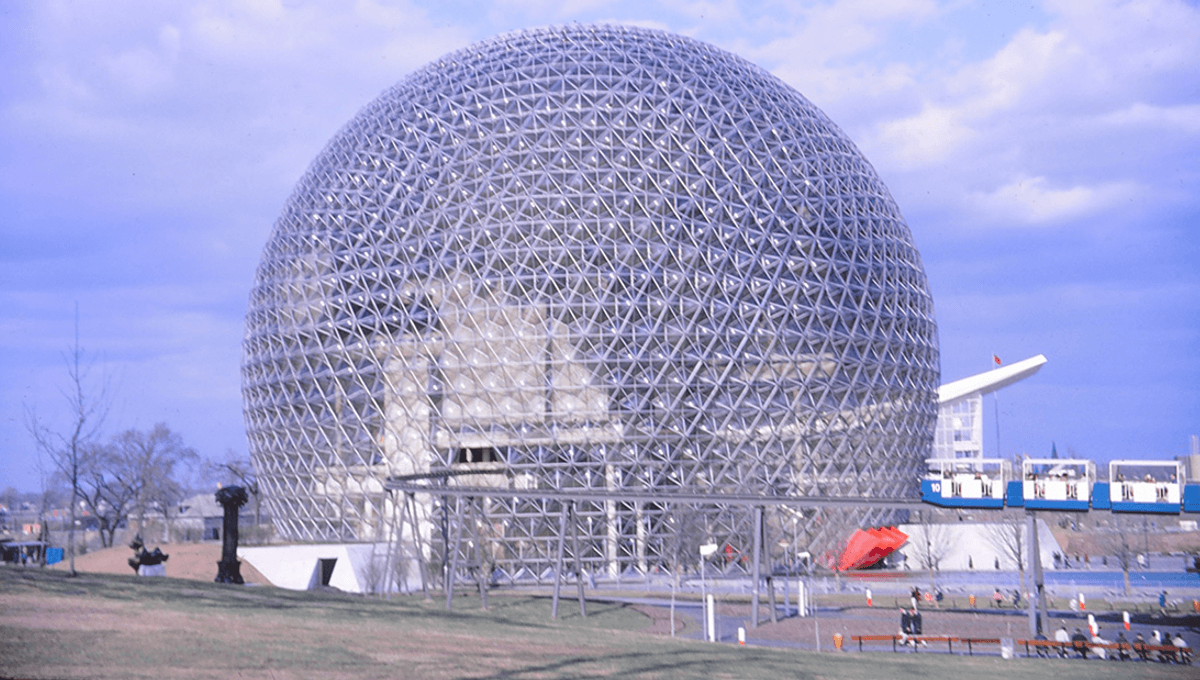
Visions of the future from the past tend to involve a lot more stuff flying around in the sky than ends up happening in real life. Disappointing as it is that we didn’t get flying cars, we have also missed out on Cloud Nine; Buckminster Fuller’s vision of the future population being housed inside gigantic flying spheres.
Fuller’s idea was based on geodesic spheres, composed of triangular sections built into a thin-shell structure shaped like a giant sphere. The advantage of building in this pattern is that it distributes the stress of the building throughout the structure.
“The triangle is the only arrangement of structural members that is stable within itself without requiring additional connections at the intersection points to prevent warping of the geometry,” one manufacturer of geodesic domes, Outdoor Igloos, explains on their site. “In other words, apply pressure to one edge of a triangle, and that force is evenly distributed to the other two sides, which then transmit pressure to adjacent triangles. That cascading distribution of pressure is how geodesic domes efficiently distribute stress along the entire structure.”
Here’s where it gets fun: geodesic domes and spheres become proportionately stronger as they get bigger. Not only that, but as the radius of a sphere increases, its volume increases at a higher rate.
Now to pause proceedings for a quick lesson on buoyancy. Buoyancy is an upward force in a fluid (any flowing substance, including air) exerted on all bodies within it. The force comes from the pressure within the fluid being greater the further down in the fluid you go. The pressure on the bottom of an object within the fluid is higher than at its top, causing the upward force.
If the buoyant force of a fluid is greater than the weight of an object placed within it, the object will float. Helium, being lighter than the other elements in our atmosphere, rises. It’s the same when air is heated inside a hot air balloon, making it less dense per volume inside the balloon than it is outside, causing it to rise.
All this means that if you were able to increase the temperature – by 1°C (1.8°F) according to Fuller – and let some of the air escape, you could greatly reduce the overall mass of the sphere, and would potentially have yourself a futuristic floating orb city to fly around in.
Whether it would work in practice is a whole other matter. Some attempting their own calculations suggest that making living areas (presumably in layers) would quickly make the whole system too heavy, making it extremely impractical, even if you don’t take into account potential damage to the sphere sending it careering towards the ground folk.
Fuller did not expect Cloud Nine (the name he gave to the idea) to actually happen. Instead, he was suggesting it as a way of making people think about how we can cope with a growing population. In 1969 the population was 3,475,400,000. Since then it has risen to over 8 billion, almost all of whom are not floating through the sky in a big balloon.
Source Link: Cloud Nine: The 1960s Idea To House Billions Of People In The Sky